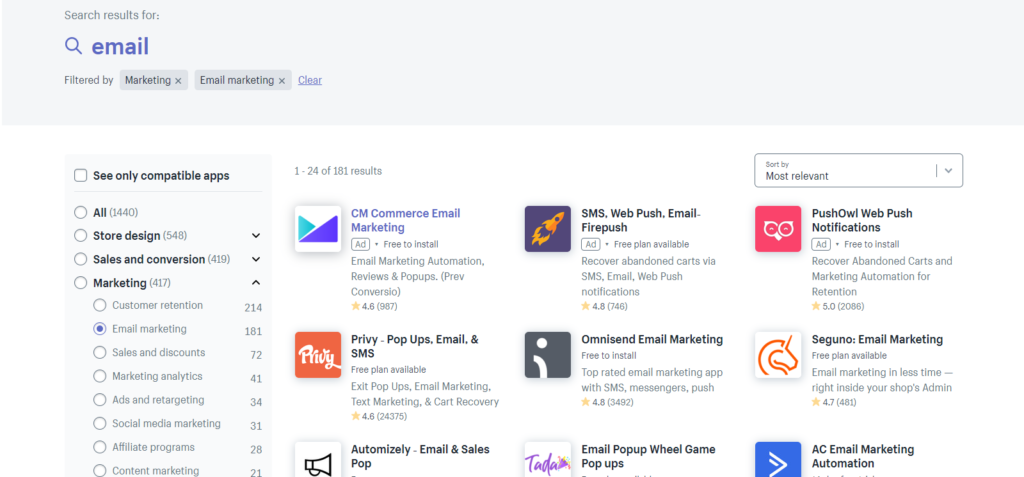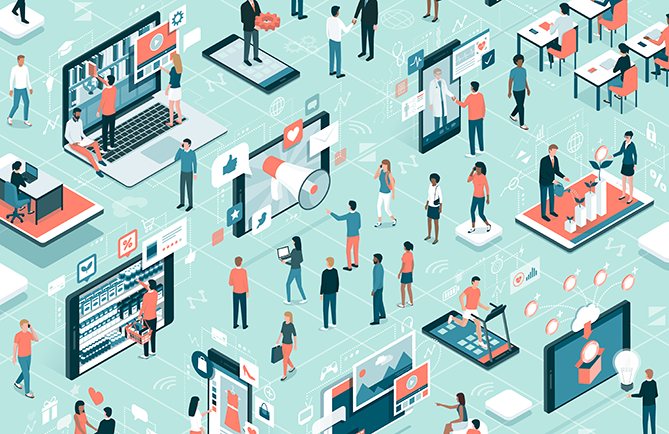Start your business with CJdropshipping
All-in-one dropshipping solution provider: product supplies, global logistics, free sourcing, POD, video shooting, and other dropshipping-related services.
CJ Blog
Email marketing is the practice of sending marketing messages to prospective and current customers via emails in order to sell, educate, or build loyalty.
Email is an especially important tool to e-commerce, where it’s used for sending broadcast, transactional, and lifecycle messages.
There are 3 main reasons that email marketing is important to your e-commercial business.
1. Email works in maintaining and strengthening customer relationships over time
Most new visitors to your store will never return—unless, you do something to keep them coming back. Building an email list and sending compelling broadcasts give you a way to retain the traffic you worked so hard to earn by providing subscribers with an incentive to stay in touch.
Email also plays a key role in encouraging a customer’s second purchase and beyond. Having customers return is important for dropshippers because it keeps their average cost of acquiring a customer down.
2. Email is an especially important tool in driving sales
Email marketing performs well in driving the first sale as well as unlock more revenue from your most valuable customers.
Increase the total number of customers (C), increase the total number of purchases per customer (purchase frequency, or F), or increase the average order value (AOV) are known as three ways to grow revenue. Email marketing offers a viable way out of the acquisition fierce competition cuz it can influence all three growth multipliers at the same time:
1) Automated welcome and abandoned cart emails help in increasing conversion rates (C)
2) Win-back campaigns react on increase a customer’s number of purchases (F)
3) Lifecycle campaigns and broadcasts work in highlighting high-value products to the right customers (AOV)
3. Email isn’t influenced by a third-party platform
One aspect of email marketing that makes it necessary is that email isn’t subject to a third-party platform, it is more important under the current circumstance, where many platforms stop displaying sponsored content related to personal protective equipment(PPE for short) of coronavirus on their website.
To start with email marketing, there are 3 basic steps that you can’t skip: select an email service provider, establish a plan to generate new subscribers, and learn how to avoid sending illegal emails.
The first step to start email marketing is to select an email marketing software through which you’ll begin building your list. There are many email marketing tools to choose from. Search keyword EMAIL on the Shopify App Store, you will get 181 results for email marketing. One must be bewildered by so many options and has no idea which to pick. Here’s the point, don’t get caught up trying to pick one that’s “perfect”, pick a well-reviewed solution that fits your needs, then start emailing and driving sales.

Start growing your list of subscribers as soon as you can, even before you launch your business, or you will repeat the biggest marketing regret that many business runners have-didn’t start collecting email addresses from the first day.
There are many ways to collect emails, for online store runners, mostly from the visitors signed on your website. Provide an incentive like a first-time customer discount is an efficient way to attract visitors to sign up.
You can even set up a basic landing page on your domain that invites visitors to stay informed by entering their email addresses before you officially launch your online store. Write copy that describes what fabulous products can be expected and offer strong incentives for early adopters, for example, early-bird customers get 20% off on launch day.
Set a pop-up form is a good way to increase conversion rates. It is suggested to set pop-ups to trigger when a visitor is slipping away, so their experience won’t be interrupted, or you may leave a bad impression to visitors. Exit-intent pop-ups only show when a visitor moves their mouse off your website toward the search bar or back button, giving you a second chance to collect their emails.
As a kind of commercial activity, email marketing should be run legally. The relationship you build with your email list needs to be based on permission; not just from a marketing standpoint, but a legal one too. Familiarize yourself with your local and target areas’ rules and regulations about email marketing, for example, CAN-SPAM, which is an acronym of the Controlling the Assault of Non-Solicited Pornography and Marketing Act. Try not to violate these acts or you could face serious fines.
Generally speaking, there are three core categories of e-commerce marketing emails: broadcast, transactional, and lifecycle.
1) Broadcast emails are designed to raise awareness for a specific deal or promotion. For example, a new product release email, a Valentine's Day gift guide email, an anniversary discount email, or a limited-time-only discount email.
2)Transactional emails are sent during checkout and other purchasing actions and are more functional in nature, sending key information to individual customers. Order confirmations, receipts, and order-shipped emails all fall within this category.
3) Lifecycle emails, also known as “triggered” emails, are sent based on what action a shopper took and where that shopper is in the customer lifecycle. For example, a cart abandonment email only sends after a customer leaves products in their cart.

Broadcast emails are sent to your entire list of subscribers or a segment of your email list, usually to promote your products. These emails include time-sensitive promotions, seasonal deals, a new product release, or newsletters.
Broadcast emails are very important campaigns in email marketing, cuz it’s a vital part you can adopt to promote conversion rate and increase sales, so take it seriously, carefully consider your underlying goal, offer, and the segment of subscribers.
Tips:
Create a compelling promotion that relates to customers’ interests.
Make good use of the segment of subscribers, send the right promotion to the target subscribers. For example, it is not advised to send regular customers too many promotions, which will bother your customers, and what’s more important, your regular customers will consider you price too high that you leave room for frequent promotions, which will harm your store image.
The mean unique open rate for transactional emails far exceeds non-transactional emails according to a study by IBM. Transactional emails are not just expected, they’re anticipated. Order confirmations, shipping confirmation email and feedback are three basic transactional emails your store should send out.
Because of the high engagement of these emails, there is much you can do to provide a better service and make extra revenue at the same time.
Tips:
1) Ensure your email receipts answer the basic questions customers have: when they can expect to receive the order, what address you’re shipping to, and where they can ask questions. Only once the fundamentals are in place should you experiment with extras.
2) For repeat customers, try suggesting related products, or include the option for an add-on or accessory to their purchase before it ships, inviting them to add more items to their box. In this way, you can increase sales per order.
3) Offer a discount code or free shipping for a future purchase within a limited time frame. This is called a bounce-back offer, it’s often better to have the customer come back at a cheaper price than not at all.
4) Suggest the customer refer a friend by forwarding a link to the product they purchased. For example, you can offer $10 for your customer when 1 of his friends uses their $20 welcome offer, or a lower value coupon when their friends register on your store.
Lifecycle emails are powerful because they’re personal and only target a small segment of your subscribers with relevant messages based on their behavior.
Cart abandonment emails, a welcome email series, second-order emails, and win-back campaigns are 4 kinds of lifecycle emails that you can consider. Each of these emails has the potential to make a significant impact on customer satisfaction and retention.
Tips:
Because lifecycle emails are sent at the specific time of one or a segment of your subscribers, to send at the right time is very important. As for welcome emails, they are requested to be sent within minutes. Let’s say you incentivize joining your newsletter with a promo code for 10% off the customer’s next purchase. If someone is ready to purchase now and they don’t receive that promo code, you risk losing out on the sale for good.
For a second-order email, it is better to be scheduled one week after the first buy, it will be a little difference from store to store, you are suggested to check your marketing analysis, and see the average time a second-order occurs.

Chat
Share